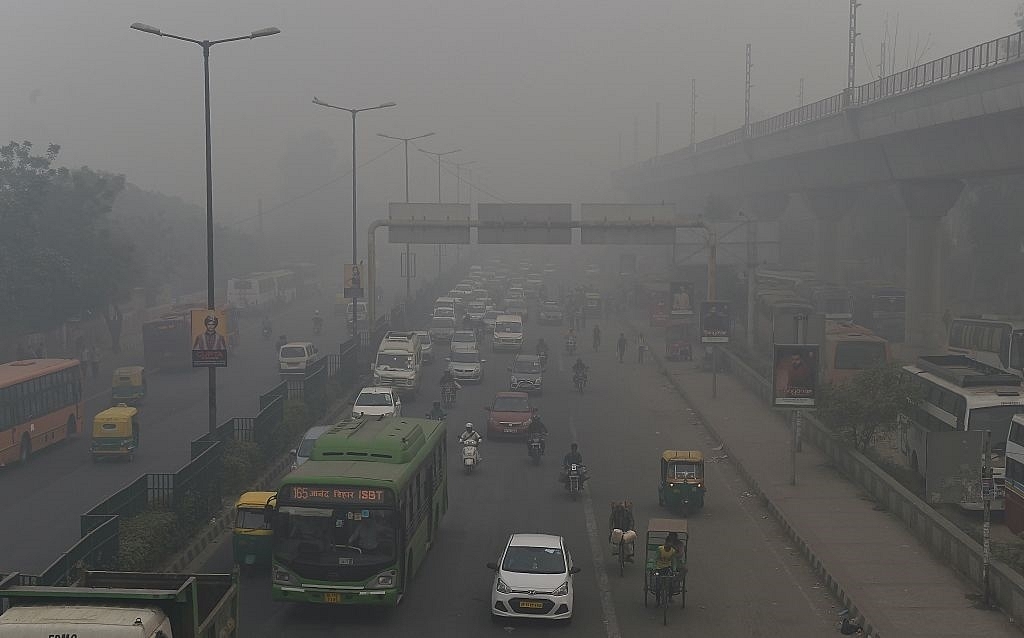Insta
Air Pollution In Delhi Dangerously High; 1,700 Schools To Remain Shut

Motorists drive on a major road as smog covers Delhi. Photo credit: PRAKASH SINGH/AFP/GettyImages
Nearly 1,700 primary schools under the three municipal corporations in Delhi have been ordered to shut down on Saturday (5 November) due to high air pollution levels in Delhi. About 10 lakh students are enrolled in these schools administered by the South Delhi Municipal Corporation (SDMC), North Delhi Municipal Corporation (NDMC) and the East Delhi Municipal Corporation (EDMC).
SDMC Leader of the House, Subhash Arya, confirmed that all primary schools under the Corporation will remain closed on Saturday."The decision was taken on Friday at a meeting in the wake of severe pollution that the residents of Delhi are facing. We have decided to keep the schools closed on Saturday, as the smog is worse during morning hours," Arya said.
The SDMC has issued guidelines on strict action against garbage burning and has constituted teams at zonal level to take action against those found burning and throwing garbage in the open."We are deeply concerned about high levels of pollution since Diwali in Delhi. The Corporation has been working on an action plan to overcome the problem of pollution. The Additional Commissioner will monitor the implementation of the plan," Arya said. He further said the sanitary inspector and the assistant sanitary inspector concerned will be held responsible for burning of garbage at 'dhalaos' (covered space for storing garbage) and near dustins. "We have ensured that one responsible employee remains present at each dhalao."
The Corporation has also issued instructions to teachers and students to avoid outside activities in the coming days, in view of the rising pollution levels.
With inputs from IANS.
Support Swarajya's 50 Ground Reports Project & Sponsor A Story
Every general election Swarajya does a 50 ground reports project.
Aimed only at serious readers and those who appreciate the nuances of political undercurrents, the project provides a sense of India's electoral landscape. As you know, these reports are produced after considerable investment of travel, time and effort on the ground.
This time too we've kicked off the project in style and have covered over 30 constituencies already. If you're someone who appreciates such work and have enjoyed our coverage please consider sponsoring a ground report for just Rs 2999 to Rs 19,999 - it goes a long way in helping us produce more quality reportage.
You can also back this project by becoming a subscriber for as little as Rs 999 - so do click on this links and choose a plan that suits you and back us.
Click below to contribute.
Latest